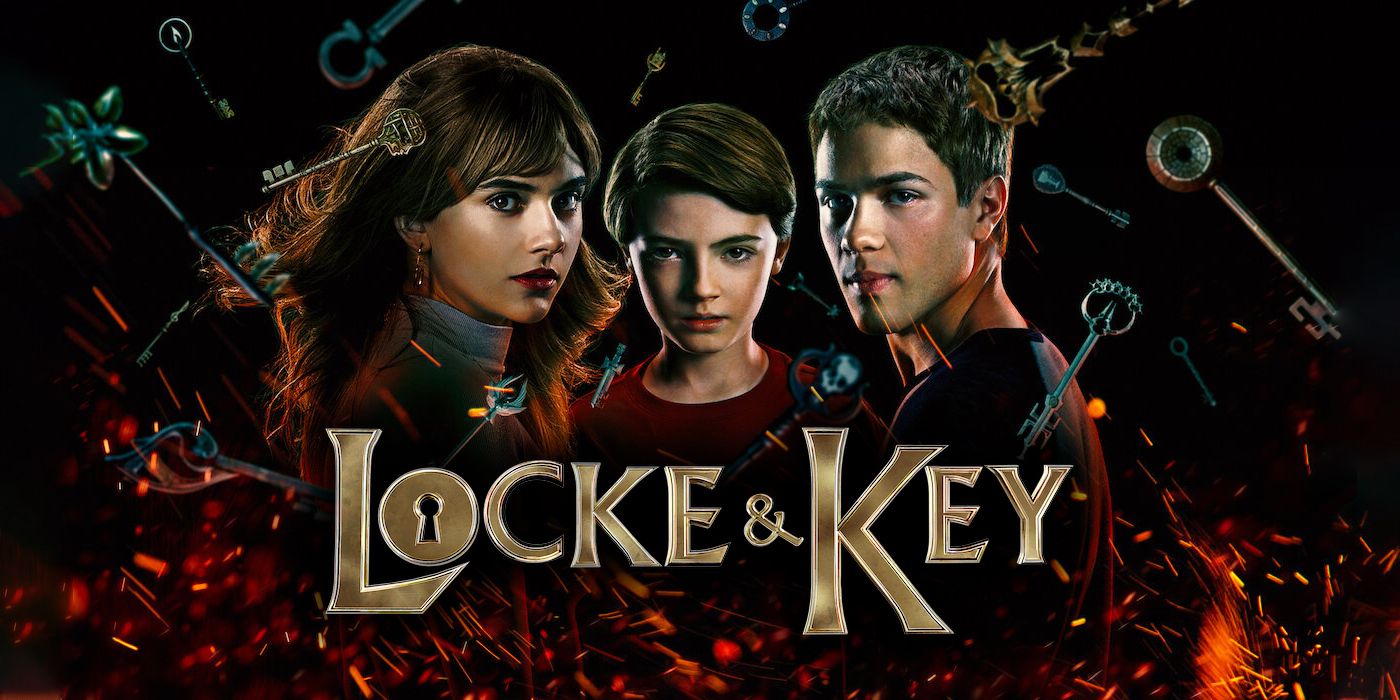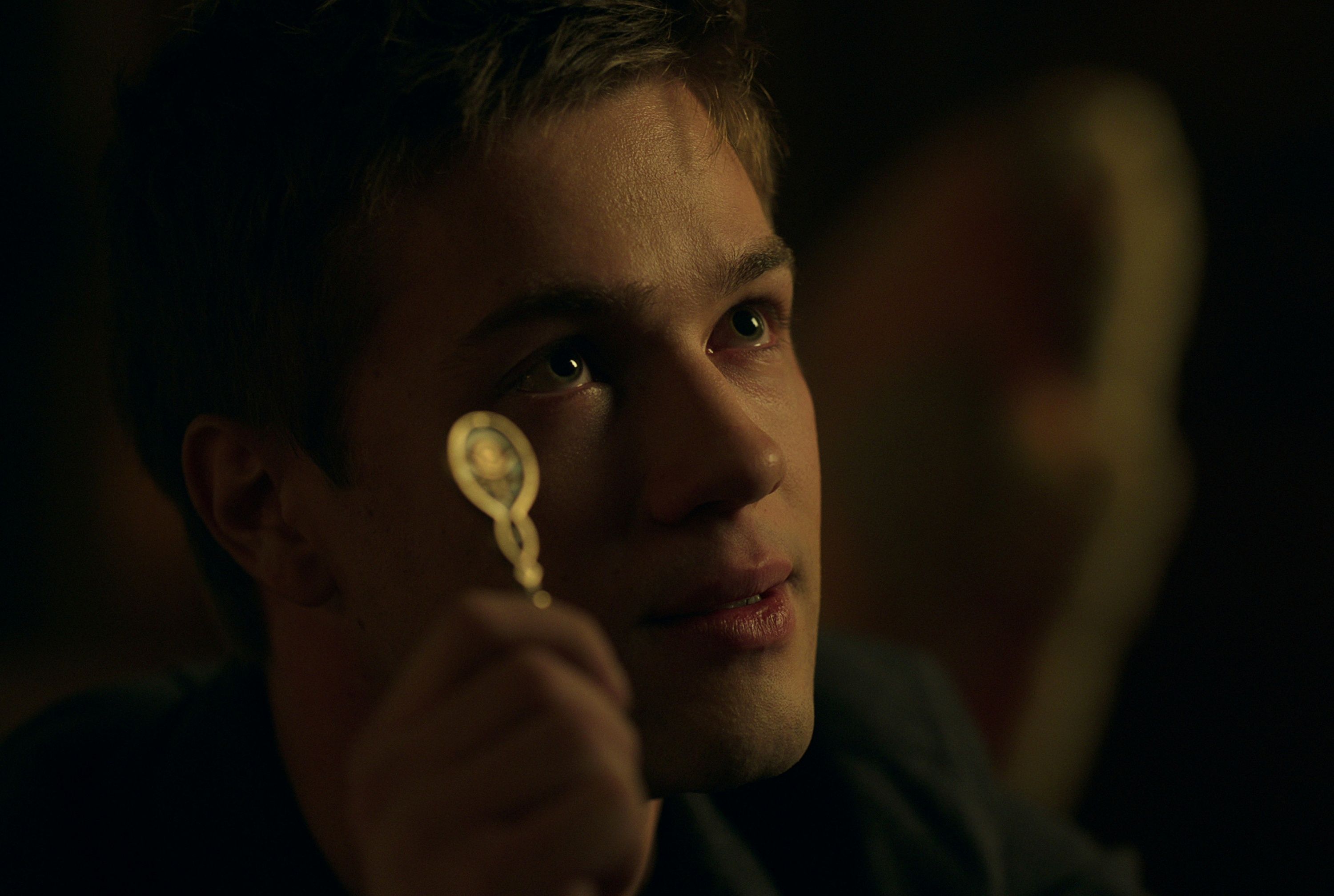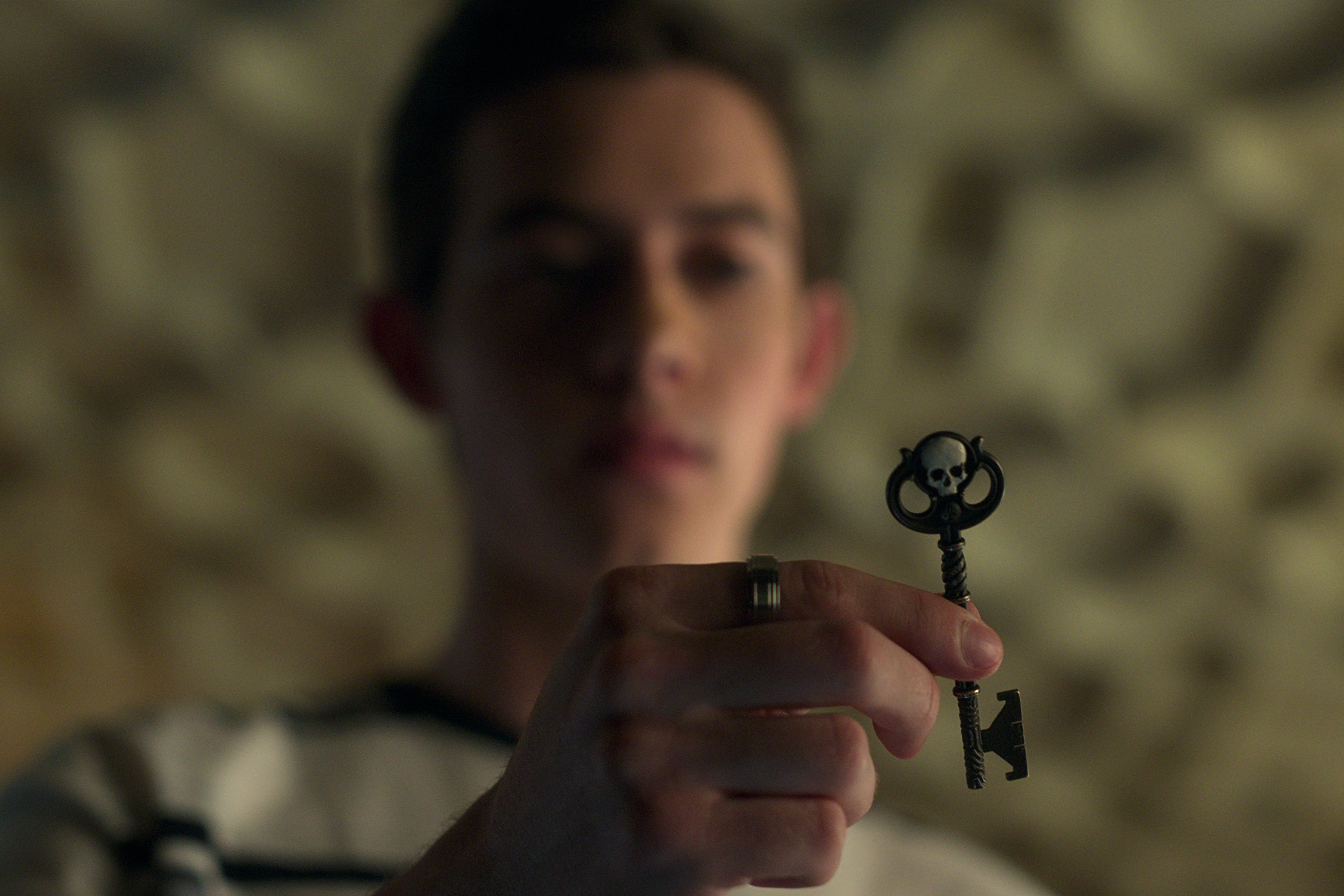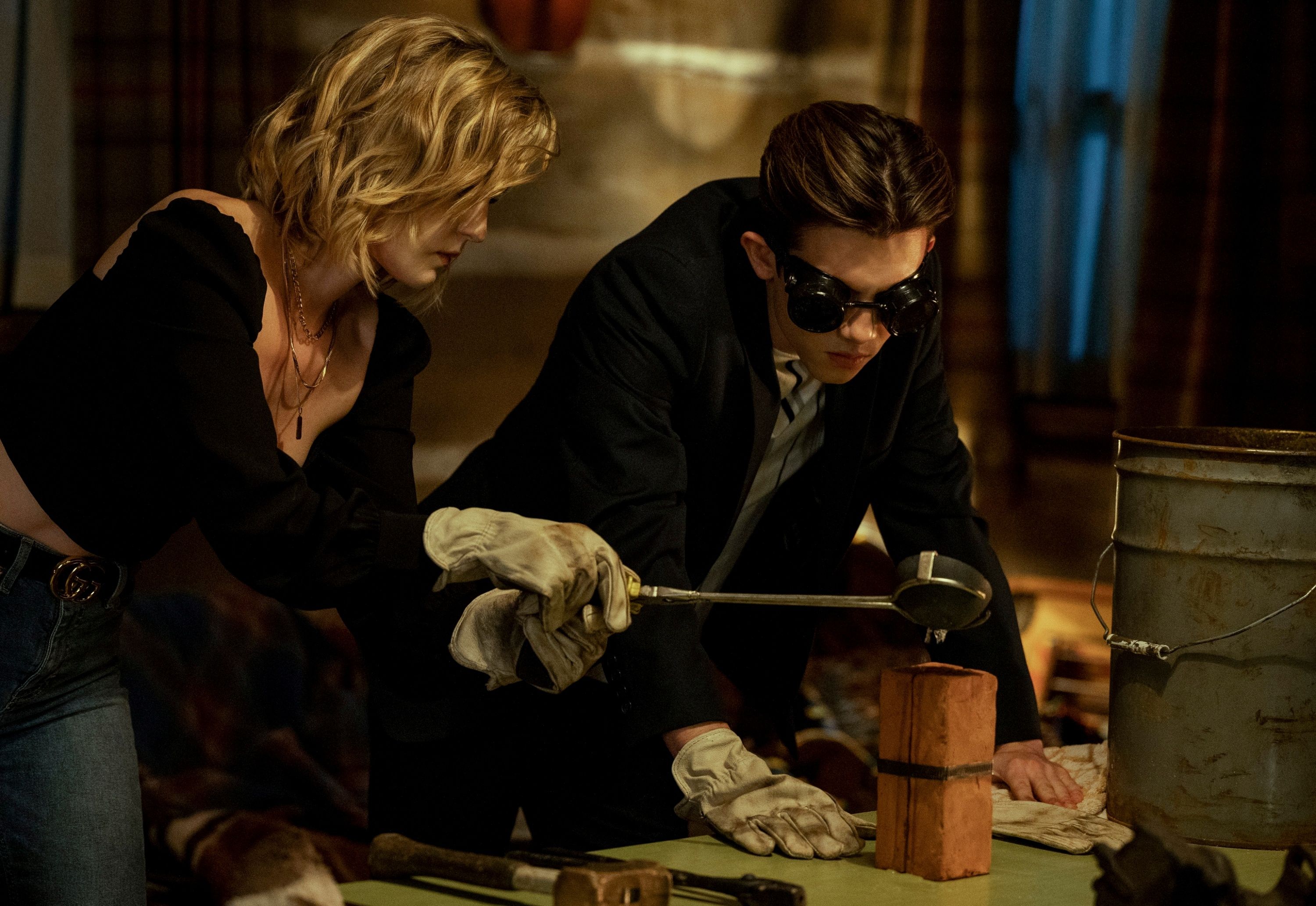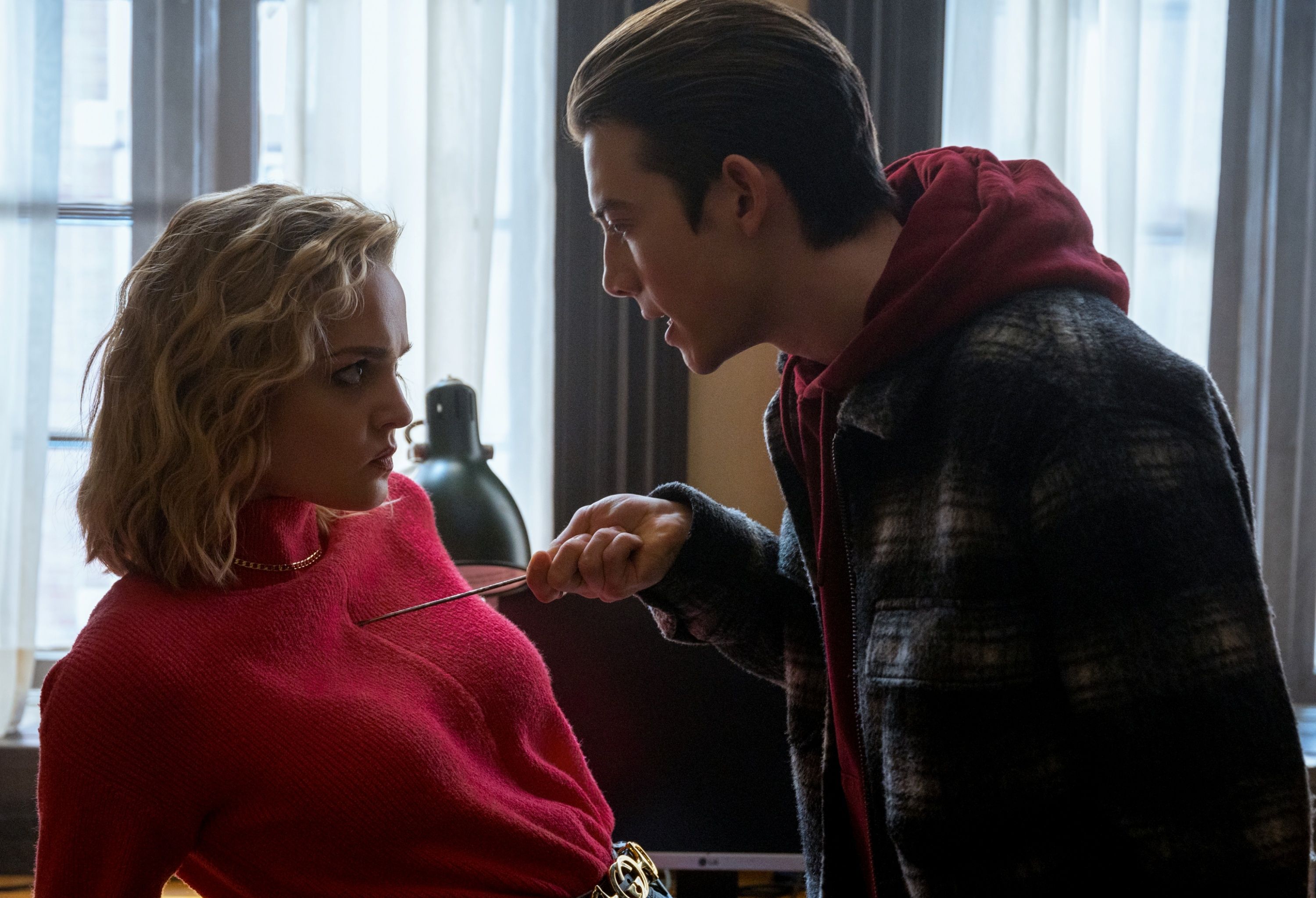Editor’s Note: The following contains spoilers for Locke & Key Season 2.Viewers once again returned to the quaint little town of Matheson and Keyhouse, the home of the Locke family in Locke & Key Season 2. This time around, the central characters had settled into their new hometown believing their main threat, Dodge (Laysla De Oliveira), was gone. Little did they know she was right in front of them as the duplicitous Gabe (Griffin Gluck).
To stop Dodge/Gabe’s pursuit of creating a new key, the Locke siblings Tyler (Connor Jessup), Kinsey (Emilia Jones) and Bode (Jackson Robert Scott) had to uncover more keys and even forge a new one. The second season of the Netflix adaptation of the Joe Hill and Gabriel Rodríguez graphic novels veered away from the source material to develop a very different story. However, some features remained—the magical keys in Keyhouse. Eagle-eyed viewers would have noticed that each episode’s title card spotlighted the key that would be…well, the key ingredient in the episode. As expected, more keys made the jump from book to screen—almost every episode of the second season introduced a new key.
So, what new keys made an appearance in Locke & Key Season 2? In order of appearance, let’s look at what each key can do, and how effectively they were used on the show.
Hercules Key
The Hercules Key does what it says on the tin—the user of this key gains superhuman strength, as seen in "The Premiere" when Bode is lifting a couch, determined to get it through a narrow door. In the comics, the Hercules key is activated by inserting it into the Hercules necklace. However, in the Locke & Key television series, the necklace is turned into a belt. This actually makes a lot more practical sense, since lifting heavy objects can be bad for your back.
The Hercules key becomes an essential weapon in the Lockes’ fight against Gabe’s demon hordes. The key isn’t a match for demon strength, but it at least slows them down.
Small World Key
This key was teased in the trailer, and the showrunners captured the magic of the comic version in the show. The Small World Key (some comic book fans refer to it as the Dollhouse Key) is activated by using it on the dollhouse replica of Keyhouse. Readers would have been expecting the dollhouse to appear eventually, but not in the way it did in the second season of the series. Newcomer Josh Bennett (Brendan Hines) owns the dollhouse and his daughter Jamie (Liyou Abere) becomes the de facto keeper of this key when Bode shows it to her.
Once the key is inserted into the dollhouse, it essentially activates a "small world" version of Keyhouse. When Bode and Jamie first use the key, they see a tiny version of Tyler in his room. Items removed from the dollhouse disappear from the actual Keyhouse, and items added in—like the spider crawling into the dollhouse—then become scaled-up versions in the real house.
The key was used sparingly in the season, but it added to the magical lore without being silly. The Small World Key even came into play during a direct confrontation between the Lockes and Eden, which added to the suspense and drama in the show.
Memory Key
There’s a golden rule in the Locke & Key universe—adults cannot remember magic. Back when Rendell Locke and his friends were teenagers on the verge of adulthood, they wanted to ensure they would remember magic, so they decided to create a key to achieve this. Hence, the Memory Key.
The Memory Key was alluded to in the first season, but it finally turns up well into Season 2. This key was created specifically for the Netflix series. In the books, the adult Keepers of the Keys still don’t recall magic, unless heavily inebriated. On the show, Rendell’s brother Duncan Locke (Aaron Ashmore) forged the Memory Key, and it eventually became crucial to his understanding of magic as an adult.
The Memory Key plays an essential role in the second season—it helps to restore Duncan’s memories of magic, and he becomes a valuable ally in the fight against Gabe. The introduction of the Memory Key also added a dramatic layer to Tyler and Jackie Veda’s (Genevive Kang) relationship. We get the feeling we haven’t seen the last of the Memory Key on the show.
Chain Key
The Chain Key is quite different in the Netflix adaptation. In the graphic novels, this key is used specifically to unlock the Great Lock which guards part of Keyhouse. In the show, the Chain Key is used to bind people in chains. We see Erin Voss (Joy Tanner) attempt to chain Gabe in the maze at the Winter Fest, and later in the finale, Dodge almost strangles Kinsey using the chain.
The Chain Key is quite a cumbersome tool—the key comes packaged with its own padlock. Once the key is inserted into the padlock, chains emerge and bind whoever the user wants. The key was an innovative addition to the show’s lore, but the novelty of the key’s magic has already worn off.
Demon Key
The Demon Key was splashed across the promotional art for the second season of Locke & Key. This was the key that was fated to cause a lot of pain, and it did. Viewers got to see three versions of the key—two faulty ones, and one that, unfortunately, did the job correctly.
Gabe was obsessed with the idea of creating his own demons using the Whispering Iron from the caves. However, because the Whispering Iron only calls to Lockes, Gabe’s first two attempts at creating the Demon Key failed and he disintegrated his targets. The third Demon Key was created by Duncan, under duress, and Gabe was able to use it to turn several Matheson townspeople, including Nina Locke’s (Darby Stanchfield) friend Detective Daniel Matuku (Martin Roach) and fellow student Javi (Kevin Alves) into demons.
While the key could easily have been just a weapon to create an army, it ended up having a much more devastating effect on the story, and the Locke family. Jackie was turned into a demon by Gabe, and this gave her memories of magic back, unfortunately, at a terrible cost.
Alpha Key
Where there’s an Omega, an Alpha can’t be far behind. In Locke & Key, the Omega key keeps demons from entering Matheson. Once Gabe started creating his own demons using the Demon Key, the Lockes had to find a way to stop the demons. None of the other keys are strong enough to fight them, so Tyler eventually creates the Alpha Key.
The Alpha key works almost exactly the same way as in the books. The key is inserted into a demon, thereby turning the person back to human, but they then die immediately after. Tyler learnt this the hard way when he used the key on Jackie and both he and Jackie initially believed that she was all right, but then she died in his arms.
One of the major criticisms of the show’s adaptation is how this key is activated. When Tyler uses it on Jackie, it opens a keyhole in her and he has to turn it to kill the demon. But in the finale, Tyler basically stabs every demon in his way and kills them. There should have been a little more consistency in the Alpha Key’s activation.
Angel Key
The Angel Key literally gives you wings, springing from a harness on the user's back. Wearing the harness and activating the key also gives the user birdlike strength, as seen when Kinsey fights Gabe in the finale and carries Tyler and herself to safety. The wings are also helpful as additional appendages. Kinsey uses the wings to hit Gabe and knock the Crown of Shadows off his head.
The Angel Key is very similar to its comic book look, with the main exception being that the keyhole is on the front of the harness, rather than the back, which makes a lot of sense. This is the kind of key that can be handy in sticky situations. Because the Angel Key was introduced almost at the end of Season 2, the key was not overused. If it reappears in subsequent seasons, the writers of Locke & Key will need to ensure the key doesn’t become a convenient Chekov’s Gun in every situation.
Secrets of the Keys
Viewers were privy to some new secrets about the keys used in Season 1. In the first episode of Season 2, Gabe explained that the Identity Key could not copy real people, it could only be used to create a non-existent person. Hence, Eden (Hallea Jones) could not turn into Kinsey. This was a brilliant move by the writers to avoid many mistaken identity tropes seen in pop culture. The magic of the key also meant that if someone’s identity was changed, they could use the key to turn back to who they were. So, Dodge, who was originally Lucas Caravaggio (Felix Mallard), could turn into him. And, in the finale Ellie Whedon (Sherri Saum) was also able to turn back to her original self after returning from the demon realm.
We also learned the origins of the first key, the Omega Key. During the Revolutionary Wars, a British soldier, Captain Frederick Gideon (Kevin Durand) attempted to steal the Locke family’s weaponry. Though he was stopped, Gideon ended up in the sea caves that housed the portal to the demon realm. Benjamin Locke (Carson MacCormac) saw Gideon become an unstoppable demon. To prevent any more demons from entering the world, Benjamin created the Omega Key that fit into the Black Door and locked the realm away. The Omega Key’s origins on the show are very close to those in the source material and will likely remain in play in subsequent seasons.

